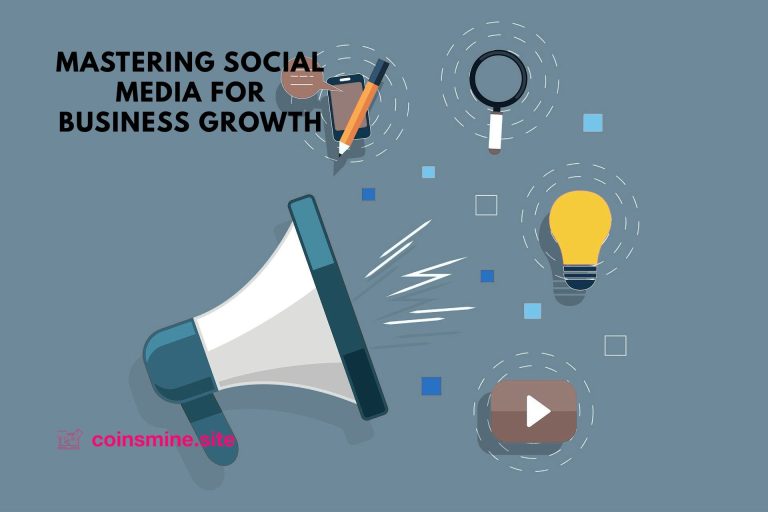Mastering Social Media for Business Growth: In today’s fast-paced digital economy, social media has become a crucial tool for businesses trying to expand and interact with their audience. Social media, which has billions of users on sites like Facebook, Instagram, LinkedIn, and TikTok, presents unparalleled chances to increase sales, engage consumers, and raise brand awareness.
But success demands more than just being present; it also calls for a well-thought-out plan, interesting content, and regular engagement. This article examines how companies of all sizes can use social media effectively to support long-term expansion and maintain their competitiveness in a world that is becoming more interconnected by the day.
Mastering Social Media for Business Growth
Social media has transformed from a platform for communication to a potent marketing tool that propels actual business growth in today’s digitally first society. Understanding social media is now crucial for engaging with your audience, establishing your brand’s trust, and increasing conversions, regardless of your company’s size. This article examines the strategy and implementation of using social media for business growth.
(1) Start With a Clear Strategy.
Businesses must respond to the following important questions before publishing content:
-
Who is our target audience?
-
What are our goals? (Brand awareness, website traffic, lead generation, sales, etc.)
-
Which platforms do our audiences use most?
-
What tone and voice represent our brand?
Without clear answers, your efforts may feel dispersed. For instance, a lifestyle or fashion brand may flourish on visually rich platforms like Instagram and TikTok, whereas a B2B software company may find LinkedIn more helpful than Instagram.
(2) Choose the Right Platforms.
Here’s a quick overview:
-
Facebook: Great for community building and ad targeting.
-
Instagram: Ideal for visual branding and influencer marketing.
-
LinkedIn: Best for B2B networking and professional content.
-
Twitter/X: Good for real-time updates and conversations.
-
TikTok: Excellent for reaching Gen Z with creative short-form videos.
-
YouTube: Strong for long-form video content and tutorials.
Your content will reach the correct people if you choose platforms depending on where your target audience spends their time.
(3) Create Engaging Content.
Content is the currency of social media. To keep your audience interested, create a mix of content types:
-
Educational (how-to guides, tips)
-
Inspirational (customer stories, quotes)
-
Promotional (product launches, discounts)
-
Interactive (polls, Q&As, live videos)
-
User-generated content (customer photos, testimonials)
It is important to be consistent. To plan and make sure your brand stays consistent and identifiable, use a content calendar.
(4) Leverage Paid Advertising.
Since most platforms have seen a decline in organic reach, paid advertising is now a crucial component of social media growth. Reaching particular demographics based on age, location, hobbies, and habits is made possible by the robust targeting tools provided by platforms such as Facebook, Instagram, and LinkedIn.
Begin modestly, test your advertisements, and then use analytics to gradually improve your campaigns. Results can be significantly enhanced by A/B testing various messages and images.
(5) Engage With Your Audience.
Social media is reciprocal. Building relationships is as important as spreading messages. Answer queries, thank followers for sharing, reply to comments, and participate in discussions within your sector.
Engagement builds a devoted following around your business and boosts visibility through algorithms. When a company seems responsive and personal, people are more inclined to trust it and make a purchase.
(6) Measure What Matters.
Track your performance regularly using platform analytics or third-party tools. Key metrics to monitor include
-
Reach and impressions
-
Engagement rate (likes, shares, comments)
-
Click-through rate (CTR)
-
Conversion rate
-
Follower growth
Make use of these insights to determine what is effective and modify your approach accordingly. Growth usually involves testing, learning, and optimizing; it is rarely linear.
Conclusion.
A strong social media presence can be the key to unlocking your business’s full potential, whether your goal is to drive direct sales or increase brand awareness. Using social media effectively for business growth requires a combination of strategy, creativity, and adaptability. When done correctly, social media becomes more than just a marketing channel—it becomes a growth engine.



